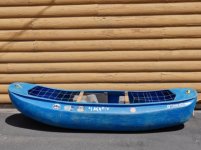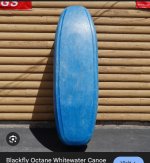I started pulling on the same side as the paddle stroke and pushing on the opposite (off) side and found it helps in keeping the canoe subtly heeled away from the paddle side and subtly counters the yaw of the stroke. I just alternate between 'hits'.
Tom, I'm not clear on this because I am not informed on hit & switch racing subtleties. Your push-pull leg technique heels the hull away from the paddle side, but then heels the hull to the other side when you switch paddle sides? So, you are essentially rocking the canoe left and right every 6 strokes or so as you switch paddle strokes? If so, I wonder about:
1. Why would you not want to paddle level on the design waterline—unless you were heeling to assist a turn or, which is essentially the same thing, to assist in correcting too much yaw?
2. Wouldn't changing the heel every six strokes or so decrease forward momentum and slow you down? I'm intuiting that constantly rocking the heel would increase skin friction or turbulence drag or both. But I'm not confident in that intuition.
For paddling with a single or double blade, I thought the general leg technique is to extend/push with the paddle side leg while swiveling your paddle side hip/torso aft along with the paddle blade. As demonstrated in this video, particularly starting around 2:40:



